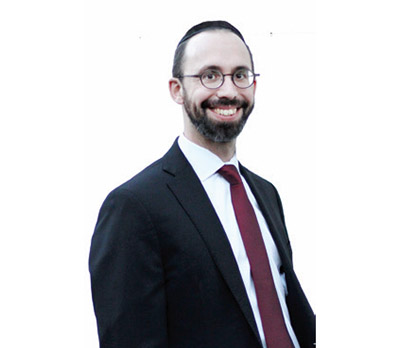
This dvar Torah is dedicated l’ilui nishmas my mother, Miriam Mirel bas Shalom, a”h, whose yahrzeit is on the 13th of Adar.
It’s hard to outgrow the childhood joys of Purim. Indeed, I still enjoy dressing up. Over the years, I’ve been an American Indian, a farmer, Superman, Moshe Rabbeinu and King David. But I’m not the first to dress up for a celebration. Achashverosh donned the Yom Kippur clothing of the kohen gadol for the big feast he made for the city of Shushan. Was Achashverosh so drunk that he confused Yom Kippur with Purim?
The Vilna Gaon reveals to us the incredibly deep relationship between Purim and Yom Kippur.
Almost every Yom Tov we are required to divide our priorities for the day: half is dedicated to Hashem through prayer and Torah study, and half goes toward making ourselves happy with delicious Yom Tov meals and drink. The Vilna Gaon points out that two yomim tovim are exceptions: First is Yom Kippur, which is entirely dedicated to spiritual activities and restrictions from five physical pleasures. Second is Purim, which apart from the megilla reading is a day of happiness-focused activities, like giving mishloach manos, matanos l’evyonim and, overall, making ourselves merry with the Purim feast.
Why no split in focus for these two holidays? The Gaon explains that Yom Kippur and Purim are really one holiday divided in half. Yom Kippur is for Hashem, while Purim is for ourselves.
The deep connection between Yom Kippur and Purim is further understood by a conversation that took place between Hashem and Yitzchak Avinu. When Hashem wanted to destroy klal Yisrael and the Beis Hamikdash, He approached Yitzchak saying, “Your children have sinned.” Yitzchak responded, “They are Your children as much as mine. Let’s make a deal: I will take responsibility for half their sins and You take responsibility for the other half.”
What was this strange deal about? Rav Yitzchak Blazer explains with the Gemara: “A Jew’s real desire is to do the will of Hashem, but two things get in the way: the yetzer hara (evil inclination) and their subjugation to the nations.” Yitzchak told Hashem he was responsible for the subjugation to the nations, as he brought Esav into the world. “But the yetzer hara was created by You, Hashem. Therefore, save the Jewish nation and just destroy the Beis Hamikdash. Even though the Jews may have sinned, they deep down want to follow Your will; it’s these two elements that lead them to falter.”
Rav Hutner explains that on Yom Kippur the yetzer hara is removed. This allows us to connect to Hashem in a very deep way. We see this through the numerical value of the word “hasatan”—364—signifying the Satan has autonomy only on 364 out of 365 days of the year.
On Purim, the oppression of the nations is removed. We see this from Achashverosh granting permission for the Jews to defend themselves from attack on the 13th of Adar and the nations in fact refraining from attacking them.
In this light, Rav Hutner says that Yom Kippur negates the yetzer hara—so we refrain from physical indulgence and connect in a very spiritual way to Hashem, immersed in prayer the entire day. On the other end of the spectrum, Purim is a day dedicated to making others and ourselves happy. Yet, how does the focus on creating happiness through food and drink correlate to removing the oppression of the nations?
Let’s face it: many of us see physicality as a negative thing. This is not a correct way of seeing it, and if we do, it’s because we have taken on the mindset of the other nations. On Purim, Hashem removes the spirit of influence from the outside world so we can really connect with the idea of the incredible holiness of the Jew even on a physical level. We eat, we drink, we make ourselves and others happy—to help us realize that the Jewish body itself is holy and pure, not just the neshama.
In Megillas Esther we begin to reveal the hidden—not just the hidden Hand of Hashem, but the hidden holiness in ourselves.
On Yom Kippur, the pinnacle of the day is the closing service of Neilah. On Purim, the pinnacle is when we eat the festive meal with meat and wine. Only then do we begin to sense the true holiness and sanctity of the body of a Jew and tap into our true inner desire to connect with Hashem.
On Yom Kippur our prayers are very powerful. So too on Purim, which is full of its own kedushah. Let’s take advantage of the Purim experience to commit and accept a new higher level of observance of Torah and mitzvot, just as the Jews back then made a renewed commitment to Torah after the miracle of Purim.
By Rabbi Baruch Bodenheim
Rabbi Baruch Bodenheim is the associate rosh yeshiva of Passaic Torah Institute (PTI)/Yeshiva Ner Boruch. PTI has attracted people from all over northern New Jersey, including Teaneck, Bergenfield, Paramus, Rockaway and Fair Lawn. He initiated and continues to lead a multi-level Gemara learning program. Recently he has spread out beyond PTI to begin a weekly beis midrash program with in-depth chavrusa learning in Livingston and Springfield. This year he joined Heichal Hatorah in Teaneck as a Gemara iyun rebbe. His email is rb@ptiweb.org.










